Surviving Stranded at Sea: What a Castaway’s Rescue Teaches Us

In 2023, a castaway’s harrowing tale of survival captured headlines when the U.S. Coast Guard rescued him after days stranded on a remote island.
Adrift at sea, he washed ashore and built a makeshift camp to endure the elements.
Thanks to a supply drop from the Coast Guard, including food, water, and a radio, he established communication and signaled for rescue with a flare.
This gripping story, featured in Fox News’ Top 5 Survival Stories of 2023, offers critical lessons for anyone facing the unpredictable power of the open water.
Here’s what we can learn from his survival, broken down into three key areas: signaling for rescue, building a temporary shelter, and rationing supplies.
1. Signaling Techniques: Be Seen, Be Saved
The castaway’s rescue hinged on his ability to signal the Coast Guard with a flare, a bright, unmistakable cry for help. Signaling is your lifeline when stranded, and mastering a few techniques can make the difference between being spotted and being overlooked.
Flares: Handheld or aerial flares are critical for nighttime or low-visibility conditions. The castaway’s flare cut through the darkness, guiding rescuers to his location. Always carry a set of marine-grade flares and know how to use them safely.
Mirrors: A signal mirror can reflect sunlight over long distances, catching the eye of passing aircraft or ships. Angle the mirror to aim the reflection at your target, sweeping it slowly to maximize visibility.
Improvised Signals: If you lack gear, get creative. Arrange rocks or logs in a large “SOS” or “X” on the beach, visible from the air. At night, a fire with green leaves can produce thick smoke to draw attention.
Pro Tip: Practice signaling techniques before you need them. A steady hand and clear head are vital in a crisis.
2. Building a Temporary Shelter: Your Defense Against the Elements
Once ashore, the castaway set up a makeshift camp to shield himself from wind, rain, and sun. A shelter is your first line of defense, preserving energy and preventing exposure.
Location Matters: Choose a spot above the high-tide line, ideally near a clearing for signaling but protected by natural features like trees or rocks. The castaway likely picked a site that balanced visibility with safety.
Materials: Use what’s available—driftwood, palm fronds, or tarp from your boat. Construct a lean-to by anchoring a sturdy branch or pole against a tree or rock, then layering it with insulating materials to block wind and rain.
Insulation: If temperatures drop, pile leaves or dry grass inside for warmth. Elevate your sleeping area off the ground to avoid moisture and critters.
Keep it simple but sturdy. Your shelter doesn’t need to be fancy—it needs to keep you alive.
3. Rationing Supplies: Stretch What You Have
The Coast Guard’s supply drop gave the castaway a fighting chance, but he still had to ration food and water to survive until rescue. When resources are scarce, discipline is everything.
Water First: Prioritize hydration. If you have a limited supply, sip small amounts regularly rather than gulping it down. If no fresh water is available, collect rainwater using tarps or containers. Avoid seawater—it’ll dehydrate you faster.
Food Management: Divide food into small portions and eat only what you need to maintain energy. High-calorie items like nuts or energy bars are ideal. If you can fish or forage, do so cautiously, ensuring anything you consume is safe.
Mental Focus: Rationing isn’t just physical—it’s mental. Stay focused on survival tasks to avoid panic, which burns energy. The castaway’s radio communication likely gave him hope, a powerful motivator.
Every drop and crumb counts. Plan as if rescue might take days longer than expected.
The Bigger Picture: Preparation Saves Lives
This castaway’s story underscores a universal truth: survival favors the prepared. His resourcefulness, combined with the right tools—like the radio and flare—turned a dire situation into a rescue. Whether you’re a weekend boater or a seasoned mariner, these lessons apply. Carry signaling devices, know how to build a shelter, and always have a plan for rationing supplies.
Exclusive Subscriber Offer: Want to be ready for the worst? Our Essential Maritime Survival Gear Guide is packed with recommendations for must-have tools like waterproof radios, emergency beacons, and compact survival kits. Subscribers get instant access—sign up today to equip yourself for any adventure.
What’s your takeaway from this incredible survival story?
Drop a comment below or share your own tips for staying safe at sea. And if you found this post helpful, share it with your crew—it might just save a life.
This post was inspired by a 2023 Fox News story on survival triumphs. Stay tuned for more real-world lessons to keep you prepared, wherever your journey takes you.
Essential Maritime Survival Gear Guide
Exclusive for On Survival Members
Venturing onto the open water is exhilarating, but the sea is unforgiving.
A sudden squall, a broken rudder, or a wrong turn can thrust you into a survival situation.
The 2023 rescue of a castaway, who survived days on a remote island thanks to a radio and flare, proves that the right gear can turn desperation into deliverance.
This guide equips you with must-have maritime survival tools—waterproof radios, emergency beacons, compact survival kits, and more.
Each recommendation is practical, reliable, and suited for boaters from weekend kayakers to offshore yachters.
1. Waterproof Radios: Your Voice in the Void
When you’re beyond cell range, a waterproof radio connects you to rescue teams or nearby vessels. These devices are built to withstand waves, rain, and submersion, ensuring you can call for help when it counts.
Standard Horizon HX890 Handheld VHF Radio ($200–$250)

This floating VHF radio combines GPS, DSC (Digital Selective Calling) for distress signals, and a 6-watt output for extended range. Waterproof to IPX8 standards (1.5 meters for 30 minutes), it features a strobe light and a 12-hour battery life. Its one-touch Channel 16 access is perfect for emergencies.
Why It’s Essential: Its GPS and DSC functions allow precise distress calls, critical for offshore or solo trips.
Cobra MR HH350 FLT Handheld VHF Radio ($100–$130)

A budget-friendly option, this floating radio is waterproof to JIS7 standards and offers 6 watts of power. It includes NOAA weather alerts and a noise-canceling mic for clear communication in stormy conditions. The bright orange design aids retrieval if dropped.
Why It’s Essential: Affordable and reliable for coastal boaters or as a backup for larger vessels.
Tip for Use: Store in a quick-access spot and test before every trip. Learn basic VHF protocols (e.g., “Mayday” on Channel 16). A waterproof case or lanyard prevents loss overboard.
2. Emergency Beacons: A Beacon of Hope
Emergency beacons like EPIRBs (Emergency Position-Indicating Radio Beacons) and PLBs (Personal Locator Beacons) broadcast your GPS location to global rescue networks via satellite. They’re your best shot at being found fast.
ACR GlobalFix V5 EPIRB ($600–$700)
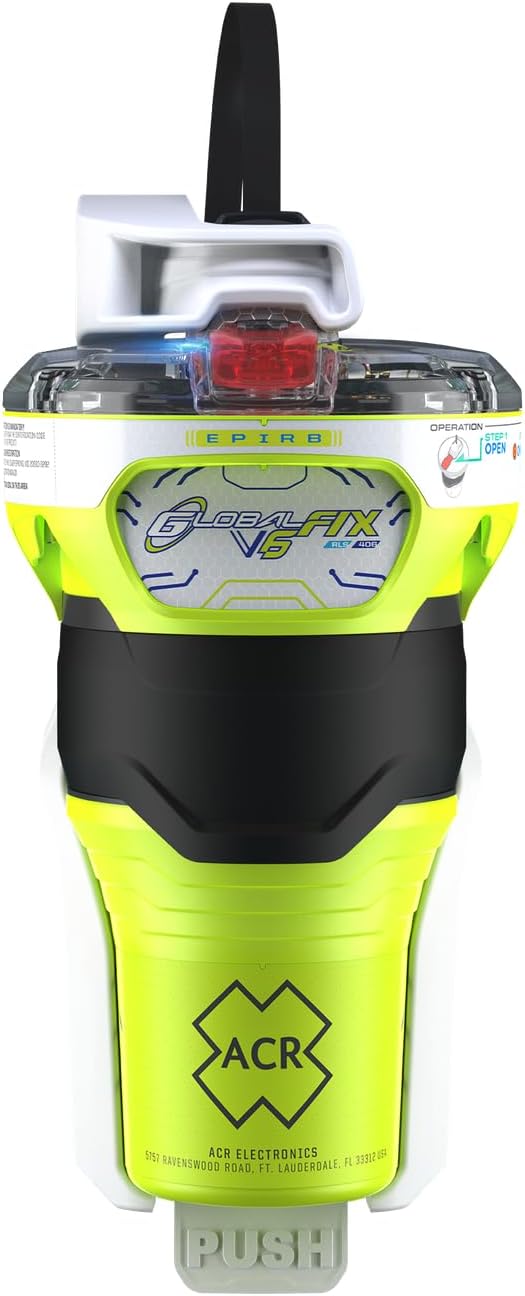
This Category 2 EPIRB auto-deploys in water, transmitting for 48 hours with GPS accuracy to 100 meters. It includes AIS for local vessel alerts and a return link signal to confirm rescue activation. Its 10-year battery life suits long-term use.
Why It’s Essential: Ideal for offshore cruisers needing robust, automatic signaling.
Ocean Signal rescueME PLB3 ($350–$400)
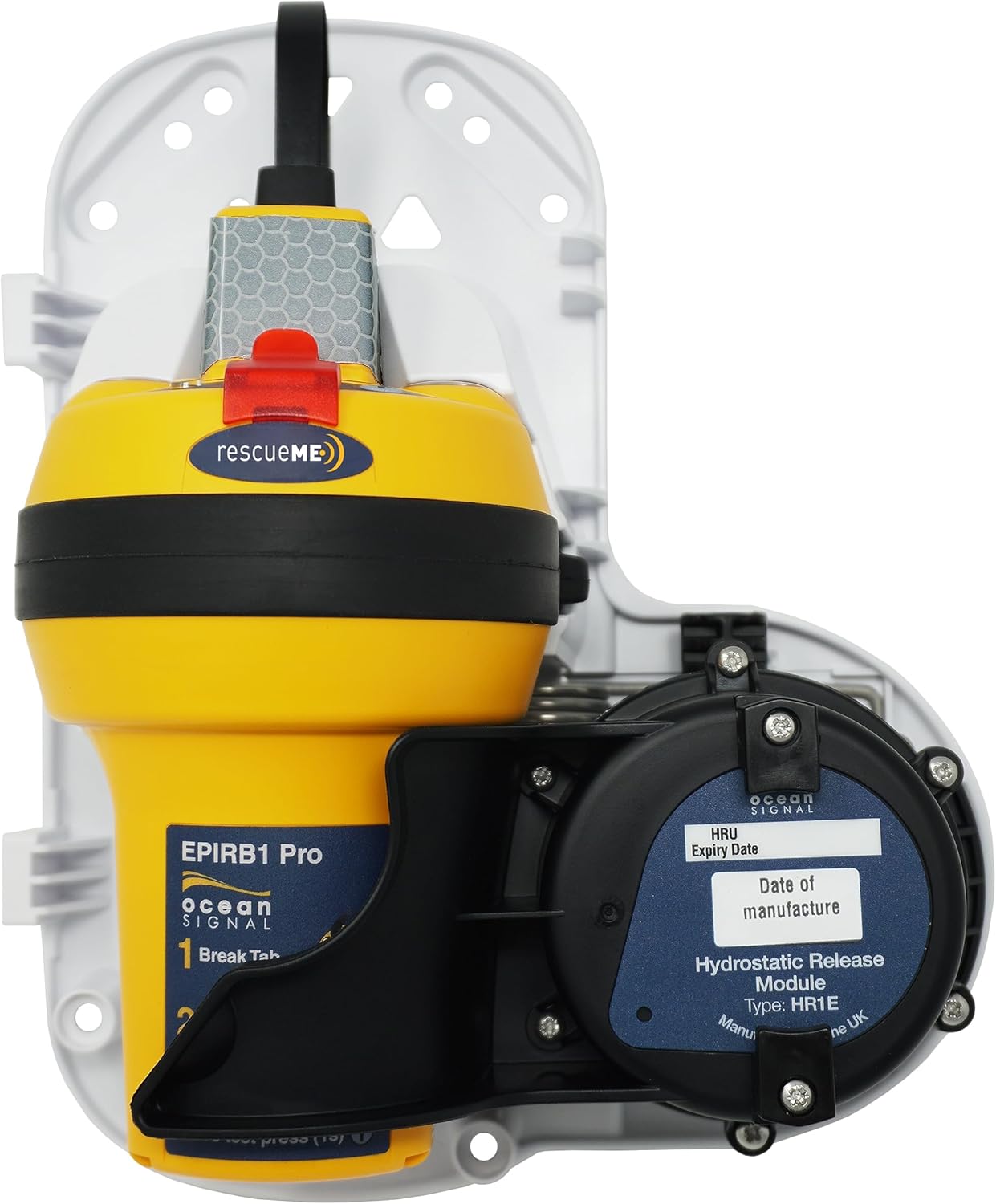
Compact enough to clip to a life jacket, this PLB offers 24-hour transmission and 5-meter GPS accuracy.
It uses AIS and return link service, with a 7-year battery life. Manual activation ensures control in emergencies.
Why It’s Essential: Perfect for solo sailors or kayakers who prioritize portability.
Tip for Use: Register your beacon with NOAA’s SARSAT system to link it to your emergency contacts. Check the battery expiration and test per manufacturer guidelines. Attach to your person or ditch bag for quick access.
3. Compact Survival Kits: Survival in a Small Package
A survival kit consolidates critical tools into one grab-and-go package, covering shelter, signaling, first aid, and sustenance. These are designed for maritime environments and easy stowage.
Adventure Medical Kits Marine 1000 ($250–$300)
Tailored for boats, this kit supports 4 people for 72 hours. It includes a waterproof first-aid manual, trauma supplies, seasickness meds, a signal mirror, whistle, and a thermal blanket. The dry-bag case doubles as a water collector.
Why It’s Essential: Comprehensive for group trips, with medical supplies for common maritime injuries.
Best Glide ASE Survival Kit ($30–$50)
This pocket-sized kit fits in a 6-ounce tin and includes a firestarter, signal mirror, fishing gear, compass, and cordage. Add a space blanket and water purification tablets for a minimalist setup.
Why It’s Essential: Ultralight and affordable, it’s great for kayaks or small boats with limited space.
SOL Emergency Bivvy and Gear Kit ($60–$80)
This kit pairs a reflective bivvy sack (for warmth and signaling) with a knife, firestarter, and LED light. The bivvy retains 90% of body heat, crucial for preventing hypothermia.
Why It’s Essential: Compact and focused on warmth and visibility, ideal for short coastal trips.
Tip for Use: Store in a floating ditch bag with a tether. Customize your kit with extra water (1 liter per person daily) and 2,400-calorie food bars. Check seals and expiration dates annually.
4. Signaling Devices: Stand Out to Rescuers
Flares, lasers, and lights complement beacons, ensuring you’re visible in any condition. The 2023 castaway’s flare signaled his rescue—proof of their life-saving potential.
Sirius Signal C-1003 SOS Distress Light ($90–$110)
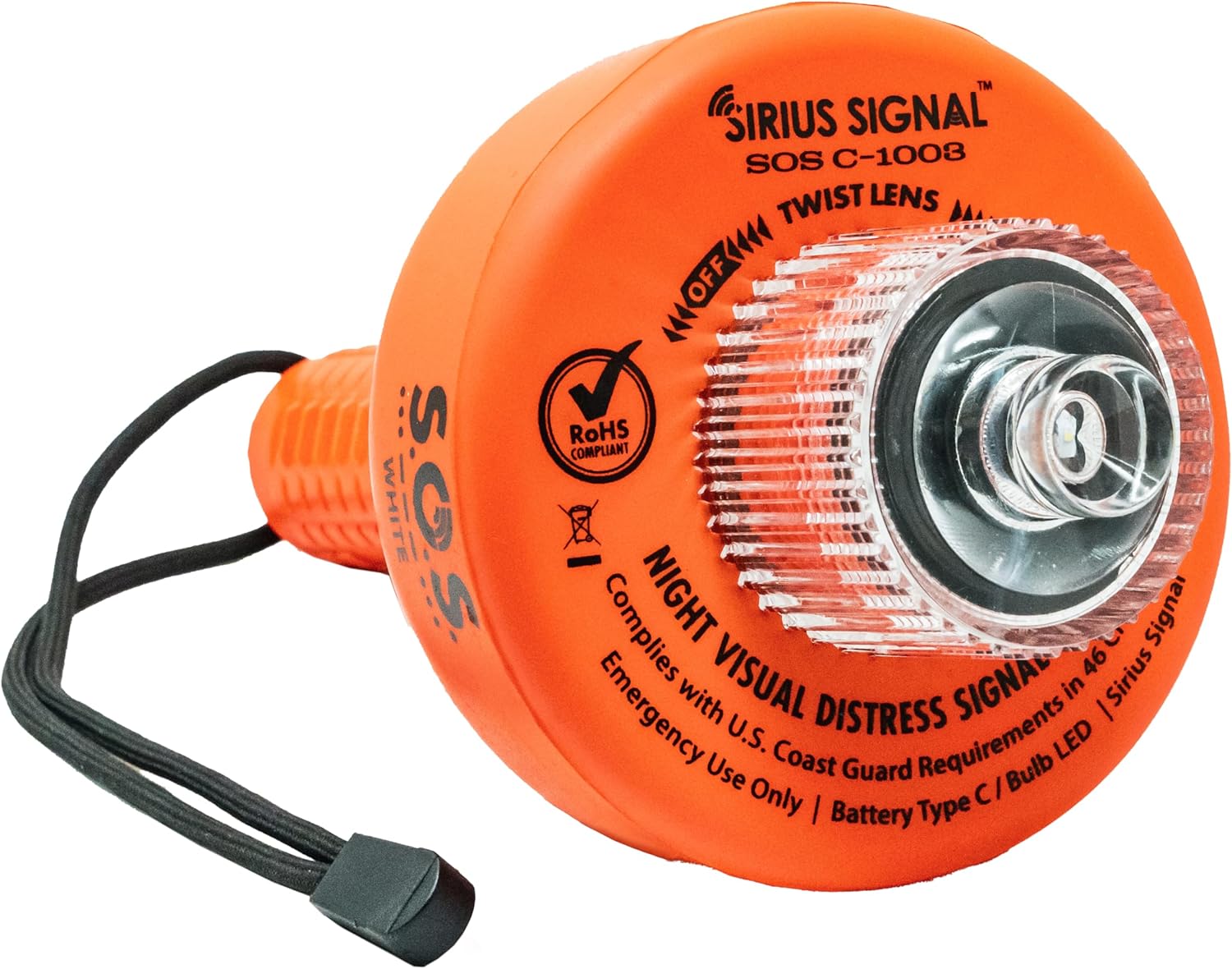
This USCG-compliant LED light replaces traditional flares, flashing an SOS pattern visible up to 10 nautical miles. It’s waterproof, floats, and runs 60 hours on C batteries. Pair with a daytime orange flag for 24/7 signaling.
Why It’s Essential: Safe, reusable, and long-lasting, it’s a modern alternative to pyrotechnics.
Orion Coastal Alert/Locate Flare Kit ($70–$100)

This kit includes four handheld red flares, two orange smoke signals, and a whistle, all in a waterproof case. Handheld flares burn for 3 minutes, visible up to 3 miles.
Why It’s Essential: Budget-friendly and versatile for day or night signaling.
Tip for Use: Carry a mix of visual (flares, flags) and audible (whistle) signals. Practice flare deployment onshore to avoid errors. Store in a dry, accessible compartment and check local regulations for flare types.
5. Core Essentials for Survival
These additional tools round out your survival arsenal, addressing flotation, hydration, and utility needs.
Onyx Impulse A-24 Auto-Inflating Life Jacket ($120–$150)
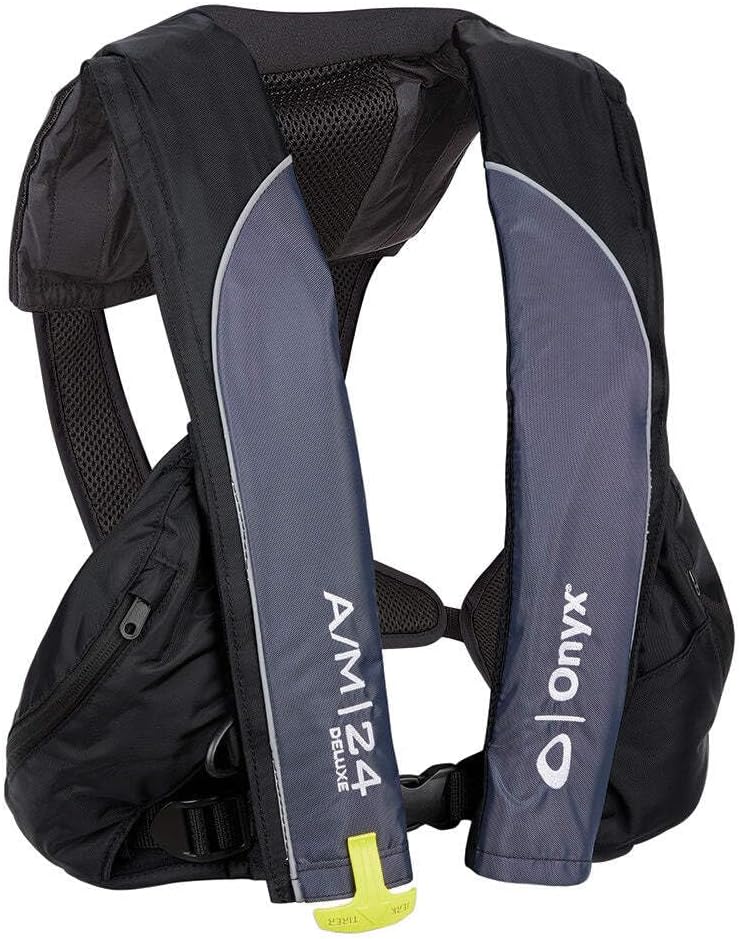
This lightweight life jacket inflates automatically upon submersion, with a manual override. It includes reflective tape and a whistle. Its low-profile design ensures comfort for all-day wear.
Why It’s Essential: Keeps you afloat and visible, a must for any boater.
Katadyn Pocket Water Filter ($300–$350)

Filters 50,000 liters of water, removing bacteria and protozoa. At 10 ounces, it’s durable for long-term use. Pair with a collapsible water bag for rainwater collection.
Why It’s Essential: Ensures safe drinking water, critical for survival beyond 24 hours.
Gerber StrongArm Fixed Blade Knife ($70–$90)
This 4.8-inch blade with a serrated edge handles shelter-building, fishing, and cordage tasks. Its MOLLE-compatible sheath keeps it secure.
Why It’s Essential: A reliable knife is a multi-purpose survival tool.
Your Survival Checklist
Gear alone isn’t enough—preparation is key. Follow these steps to stay ready:
Organize a Ditch Bag: Use a waterproof, floating bag (e.g., Mustang Survival Highwater) to store all gear. Keep it tethered and accessible.
Train and Test: Familiarize yourself with radio calls, beacon activation, and flare use. Test gear before every season.
Plan for 72 Hours: Pack 1.5 liters of water and 2,000 calories per person daily, plus extra for delays.
Stay Visible: Use beacons for global rescue, flares for local attention, and mirrors for daytime signaling.
Brief Your Crew: Share gear locations and emergency protocols with everyone onboard.
Gear Up, Stay Safe
The 2023 castaway’s survival hinged on a radio and flare—tools that bridged him to rescue.
With the gear in this guide, you’ll be equipped to handle the unexpected, from a day trip to a transoceanic voyage. Invest in quality, practice your skills, and sail with peace of mind.
Subscriber Perk: Reply with your favorite piece of survival gear or a boating safety tip, and we’ll feature the best in our next newsletter!
Got questions about specific gear or scenarios?
Drop them below, and we’ll customize answers for your next adventure.
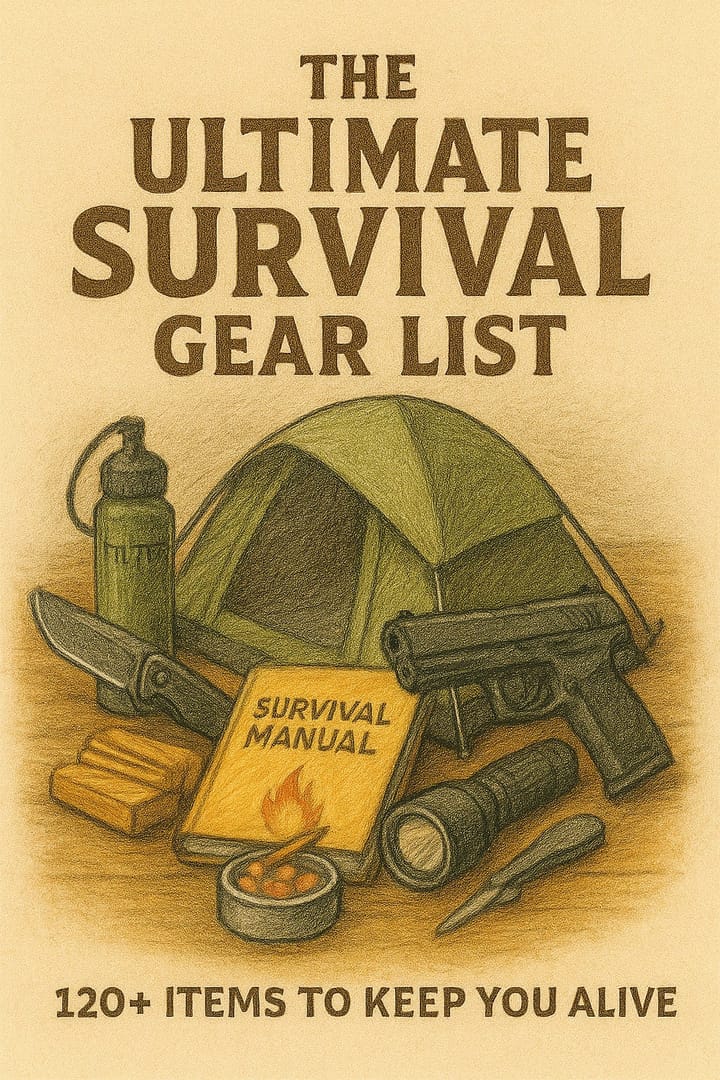


Comments ()